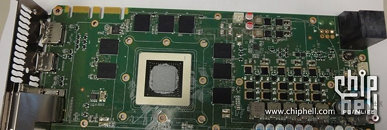Thursday, March 8th 2012

GK104 Dynamic Clock Adjustment Detailed
With its GeForce Kepler family, at least the higher-end parts, NVIDIA will introduce what it calls Dynamic Clock Adjustment, which adjusts the clock speeds of the GPU below, and above the base-line clock speeds, depending on the load. The approach to this would be similar to how CPU vendors do it (Intel Turbo Boost and AMD Turbo Core). Turning down clock speeds under low loads is not new to discrete GPUs, however, going above the base-line dynamically, is.
There is quite some confusion regarding NVIDIA continuing to use "hot clocks" with GK104, the theory for and against the notion have been enforced by conflicting reports, however we now know that punters with both views were looking at it from a binary viewpoint. The new Dynamic Clock Adjustment is similar and complementary to "hot clocks", but differs in that Kepler GPUs come with a large number of power plans (dozens), and operate taking into account load, temperature, and power consumption.The baseline core clock of GK104's implementation will be similar to that of the GeForce GTX 480: 705 MHz, which clocks down to 300 MHz when the load is lowest, and the geometric domain (de facto "core") will clock up to 950 MHz on high load. The CUDA core clock domain (de facto "CUDA cores"), will not maintain a level of synchrony with the "core". It will independently clock itself all the way up to 1411 MHz, when the load is at 100%.
Source:
VR-Zone
There is quite some confusion regarding NVIDIA continuing to use "hot clocks" with GK104, the theory for and against the notion have been enforced by conflicting reports, however we now know that punters with both views were looking at it from a binary viewpoint. The new Dynamic Clock Adjustment is similar and complementary to "hot clocks", but differs in that Kepler GPUs come with a large number of power plans (dozens), and operate taking into account load, temperature, and power consumption.The baseline core clock of GK104's implementation will be similar to that of the GeForce GTX 480: 705 MHz, which clocks down to 300 MHz when the load is lowest, and the geometric domain (de facto "core") will clock up to 950 MHz on high load. The CUDA core clock domain (de facto "CUDA cores"), will not maintain a level of synchrony with the "core". It will independently clock itself all the way up to 1411 MHz, when the load is at 100%.

56 Comments on GK104 Dynamic Clock Adjustment Detailed
But based off the release model number it is their high end.
Based off the cuda core count, die size and process there will not be anymore cores to utilize,thus meaning only a two core version for more performance.
It only beat a 7970 by 10% in BF3, a TWIMTBP game AFAIK.
They have complained of clockspeed/yeild issues.
Its still not here, but I hear if you travel to a press event half way around the world they will give you chocolate. The chocolate must mean at least 50% faster...........we swear it.
I see nothing that indicates BF3 having an edge on Nvidia cards. That's just one rumor. Various people have claimed the Kepler offerings would beat AMD cards in performance, and Nvidia has clearly made it their intent to always have the most powerful single card (non-dual GPU) card on the market, so I doubt they would buck trends now.
Like I said, the only questions in my mind are Price and Power Consumption, and arguing about anything else seems trivial.
At this point, we do not have enough information to say anything that isn't a guess; an assumption based on other assumptions based on other possibly true statements is still just a guess.
But I think it's fun to guess. If no one guessed or assumed, some posters would have thousands fewer posts...
If Nvidia prices them similarity against the competitor's "enthusiast" offering that's what "they are" no matter the die size. Now if the price it against the competitors mid-range products and performs consistently in the competitors enthusiast price point, it's called neither… it's would be just the winner!